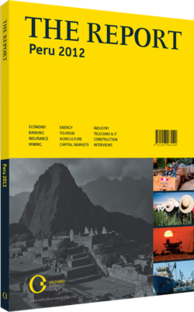Speed bumps: Despite growing corporate tourism, state support proves elusive
Even before finishing construction and opening its doors in 2011, the Westin Lima Hotel and Convention Centre had received requests for corporate conference bookings until 2017. As Lima’s first major convention centre with a hall that can fit 2000 attendees and other relevant facilities meant for large receptions – not to mention the city’s tallest building at 118 metres high – the hotel represents a new phase in Peru’s expanding corporate tourism industry.
Around 20% of tourists who visited Peru in 2010 arrived for business, according to reports published by the state-run Export and Tourism Promotion Agency (PromPerú). After the global economic crisis in 2008-09, this percentage dipped slightly, but since then has been growing steadily mainly due to the number of new foreign investments in the country.
BECOMING A MAJOR HOST: Peru’s National Chamber of Tourism (CANATUR) has caught on to the trend and aims to contribute by transforming Lima into a major host of international conventions, which would entail events as diverse as medical to corporate meetings and academic conferences. Although business and convention tourism are divided into separate categories in PromPerú’s statistics, the CEO of CANATUR, Luis Villa Prado, believes both go hand-in-hand. “More conventions attract more business because they showcase Peruvian industries and services to international visitors, and establish personal contacts that can lead to future deals,” he told OBG. Restaurants, commerce and employment also benefit since “conferences rotate the entire economic wheel,” he added.
However, past attempts have not always been fruitful. In 2003 private sector representatives organised the Lima Convention Bureau (BCL). But with only limited state funding, it proved difficult to continue operations. Determined to get the initiative back on pace, the executive committee was re-established in 2011, with CANATUR’s president, Carlos Canales, at the head.
GOALS: Aiming to enter the meetings, incentives, conferencing and exhibition (MICE) segment, BCL worked with MICE Consulting, a Latin America-based firm, to draw up strategic plans, which included figures and benefits of convention tourism. One key goal was to construct new centres with the capacity to host major international events, since past conventions had faced logistical challenges. Canales told local press that Lima would generate some $1bn from this segment, determining that international business tourists tend to stay in Peru for five days and spend on average $300 per day, much more than average daily spending by leisure tourists, which PromPerú estimated to be $100 in 2010.
Yet these numbers did not seem to convince officials to provide backing, and state financing has not rolled through for the project. The BCL still exists as a legal entity, but with no website and little public information on its goals and work, the association has somewhat retreated into the shadows. “We decided to put the project on stand-by, which is a shame because there are resources to make this a reality, but little political conviction,” Villa Prado told OBG. “Neighbouring countries, such as Colombia, Venezuela and Chile, have state support for convention bureaux and the results have proved very positive.”
LAGGING BEHIND: Indeed, Peru still lags quite far behind other major Latin American countries in this segment. According to the International Congress and Convention Association, Brazil stands alone, having held 275 association meetings in 2010, followed by Argentina with 172 and Mexico with 140 meetings, while Chile and Colombia trailed with just under 100 conferences each. For that same year Peru held 44 meetings, a number which Villa Prado would like to see rise to 50 by the end of 2012.
Despite a lukewarm government reception, Villa Prado remains optimistic, and CANATUR will continue to push the project, resorting to more promotion among the private sector. One factor Villa Prado believes is key to helping move the initiative along and attract visitors to these types of events is Lima’s increasing reputation as a safe destination in Latin America.
You have reached the limit of premium articles you can view for free.
Choose from the options below to purchase print or digital editions of our Reports. You can also purchase a website subscription giving you unlimited access to all of our Reports online for 12 months.
If you have already purchased this Report or have a website subscription, please login to continue.

